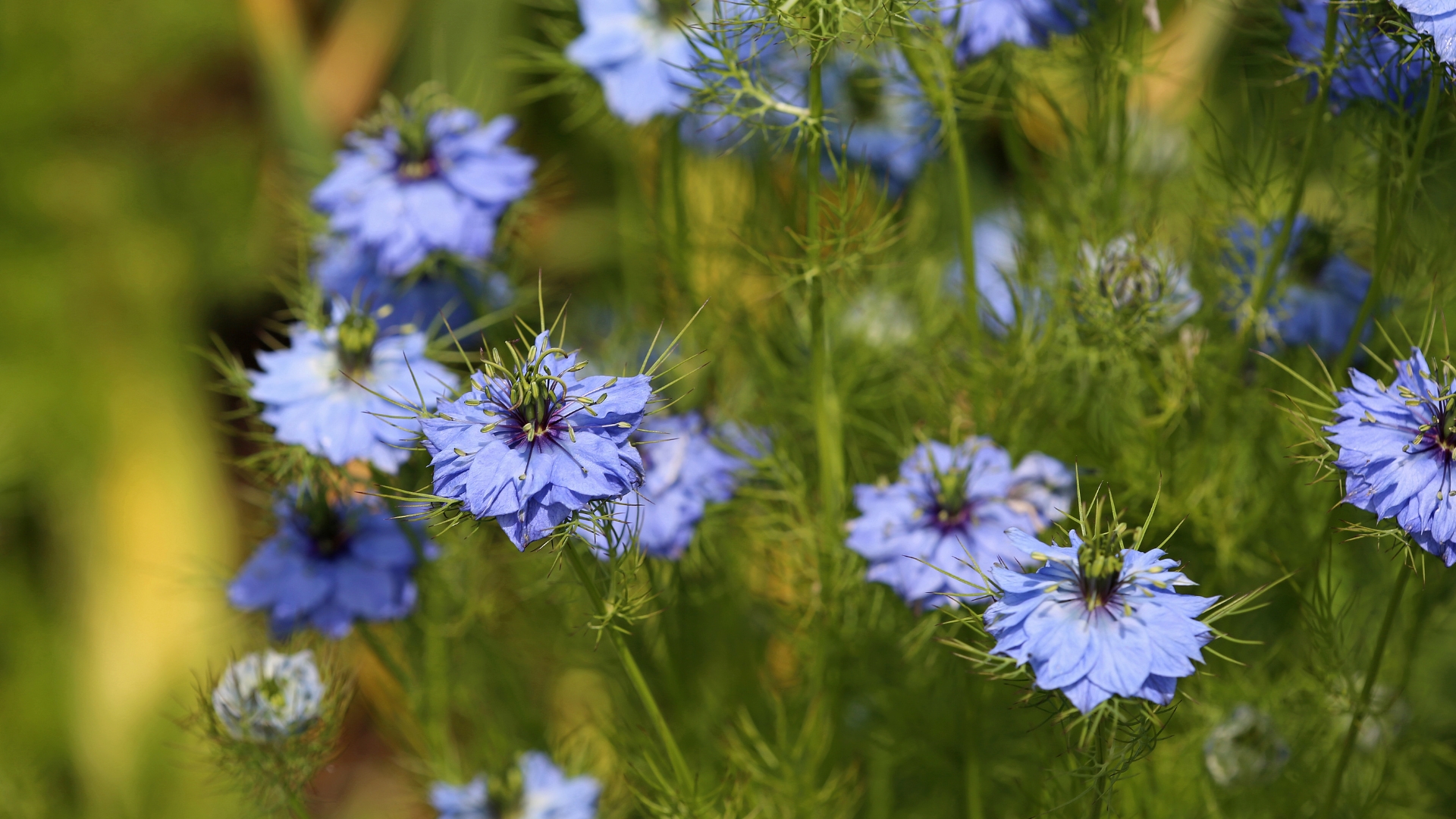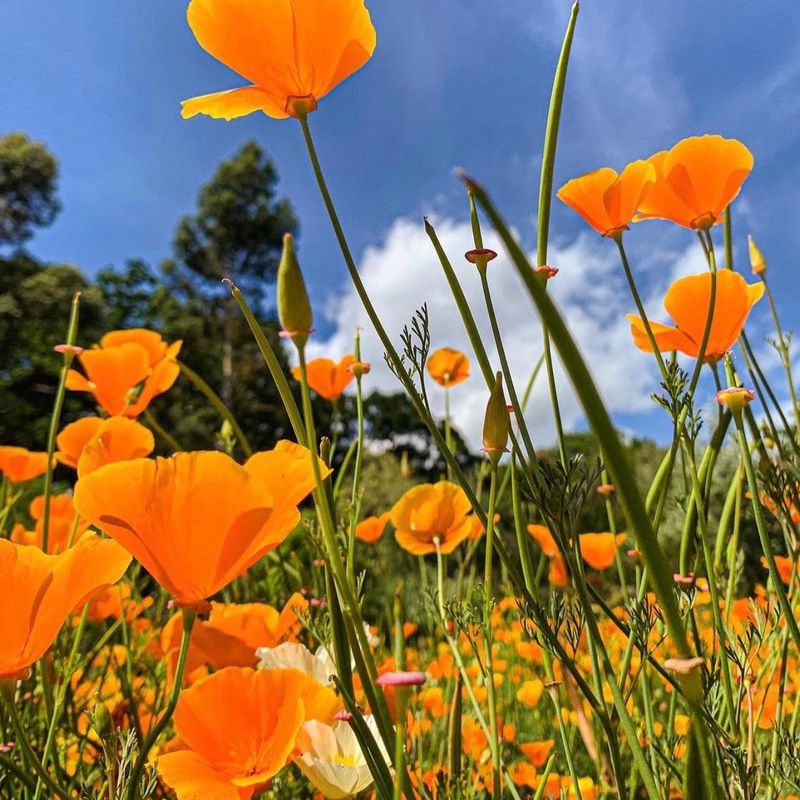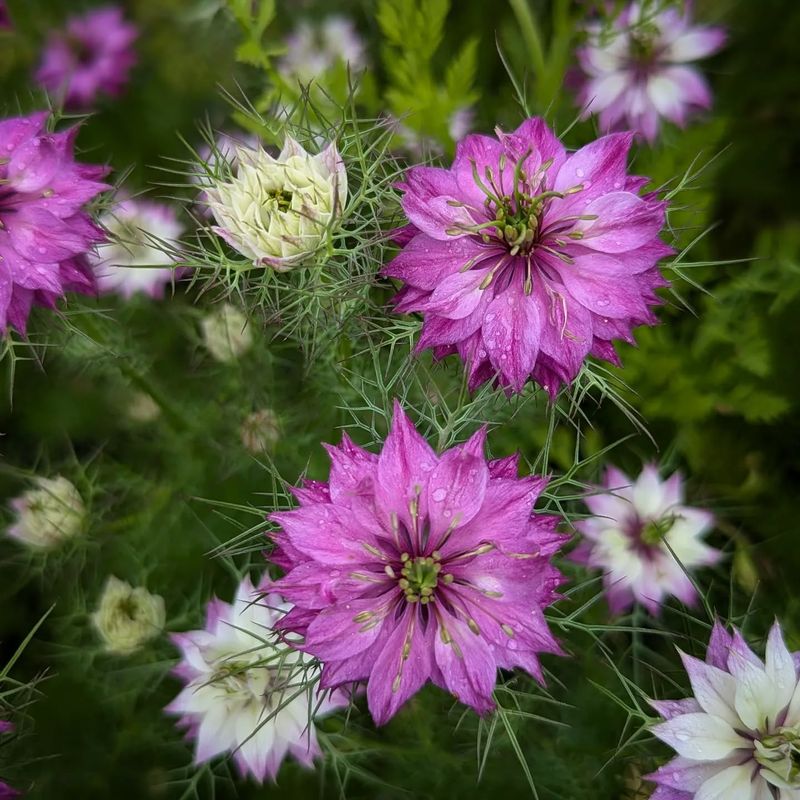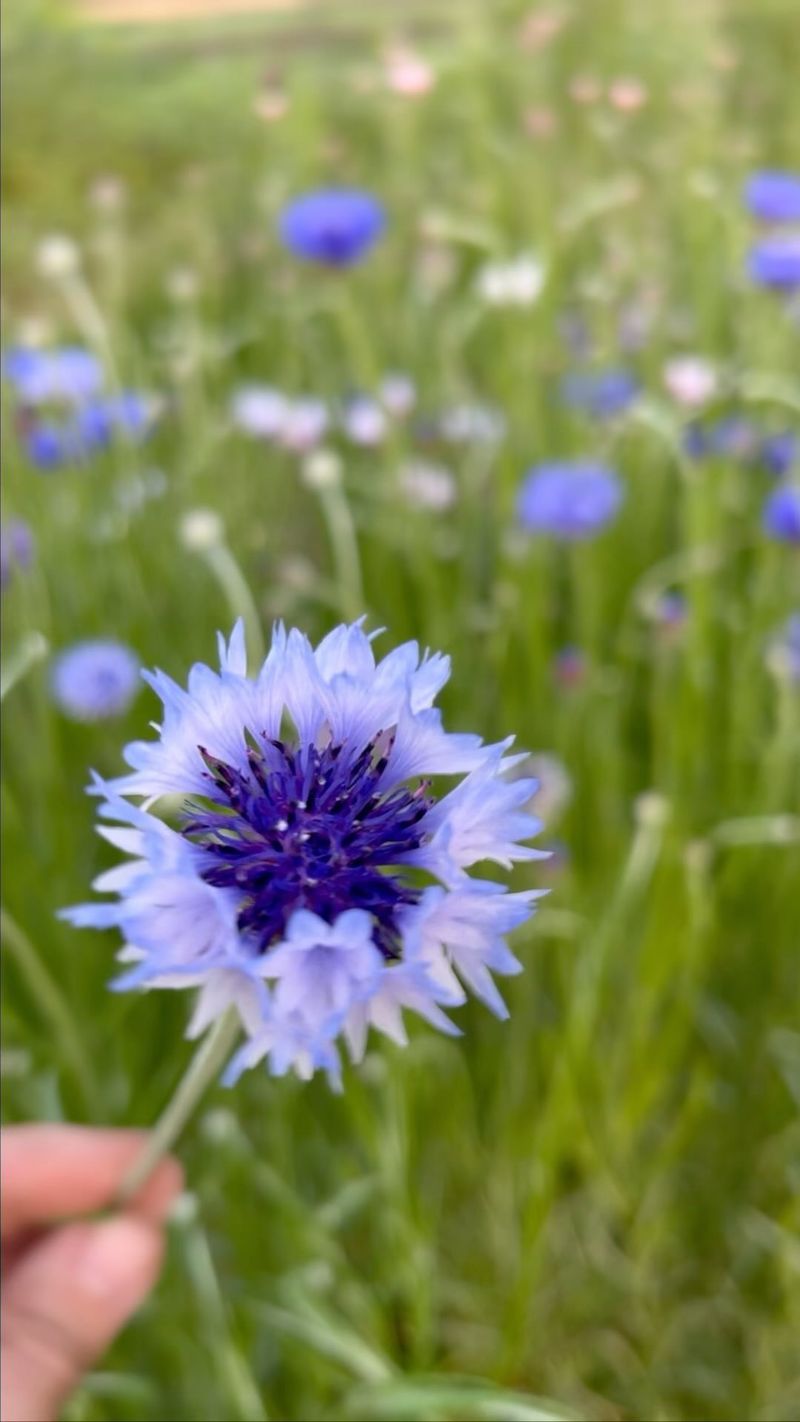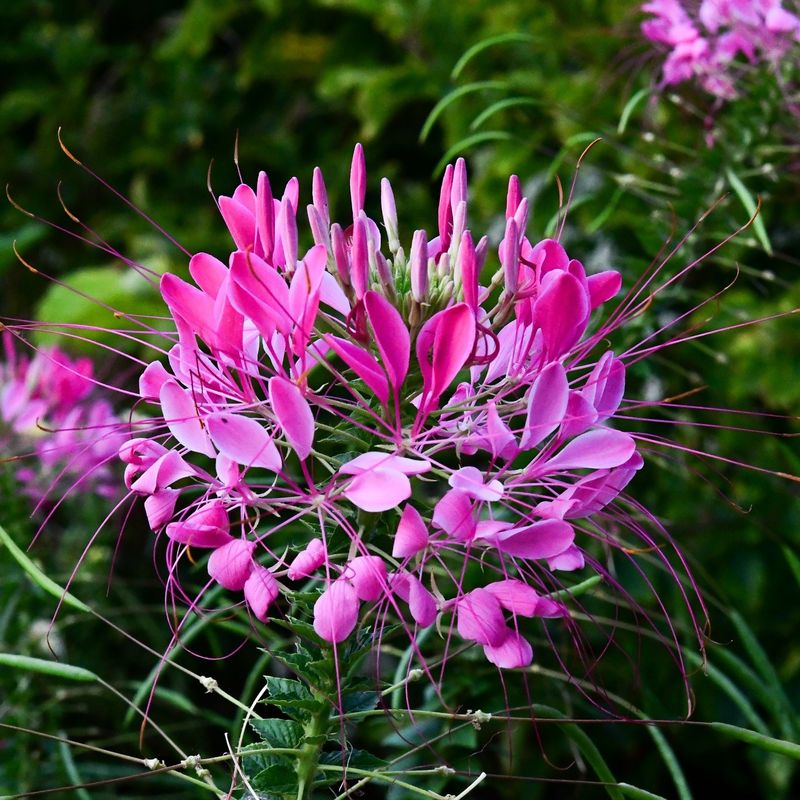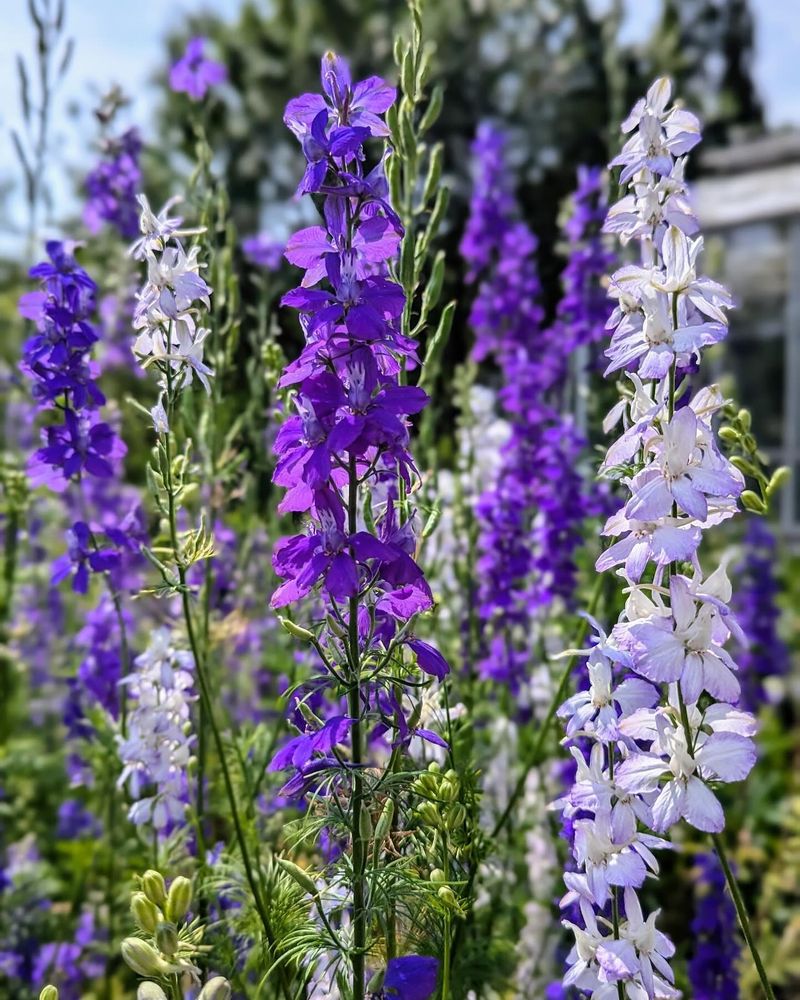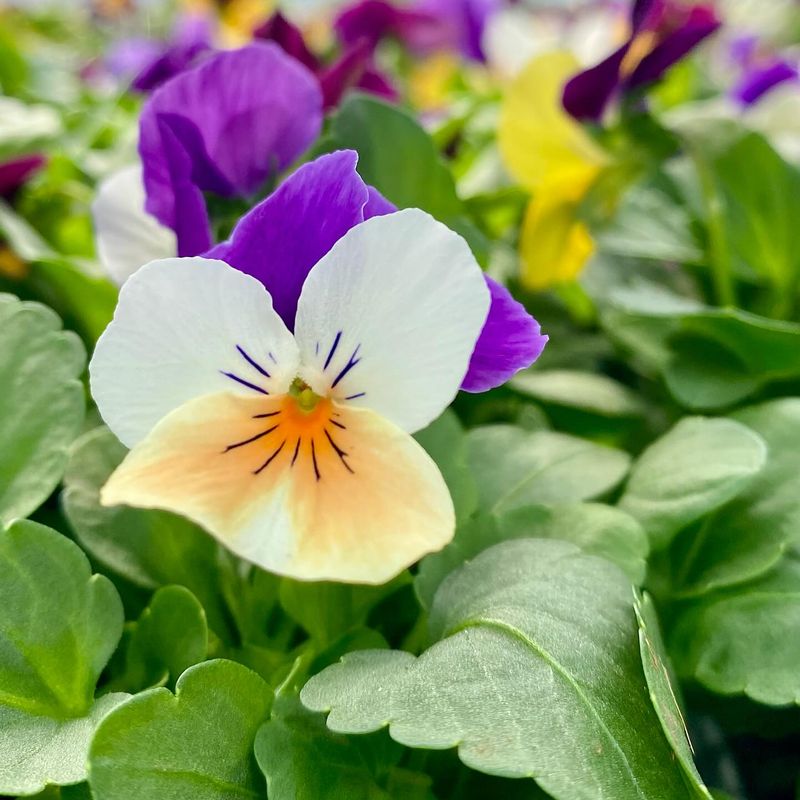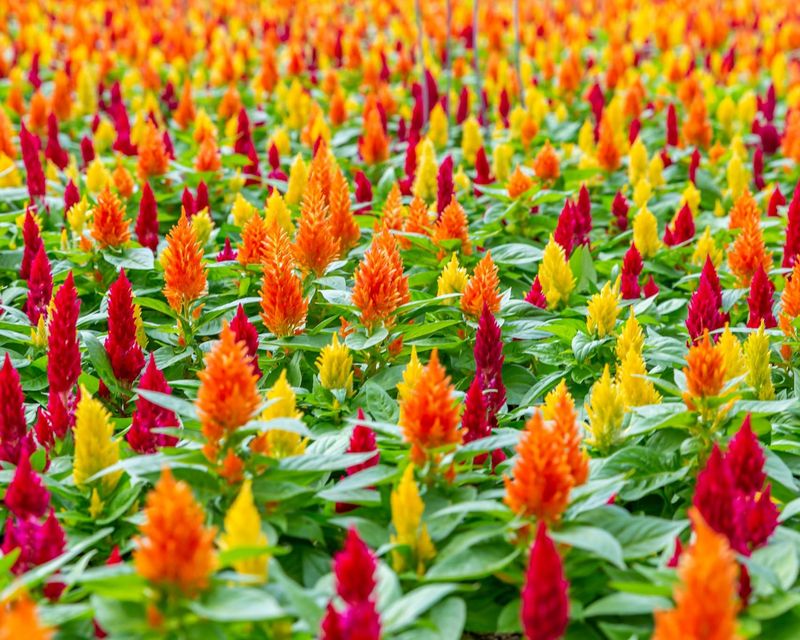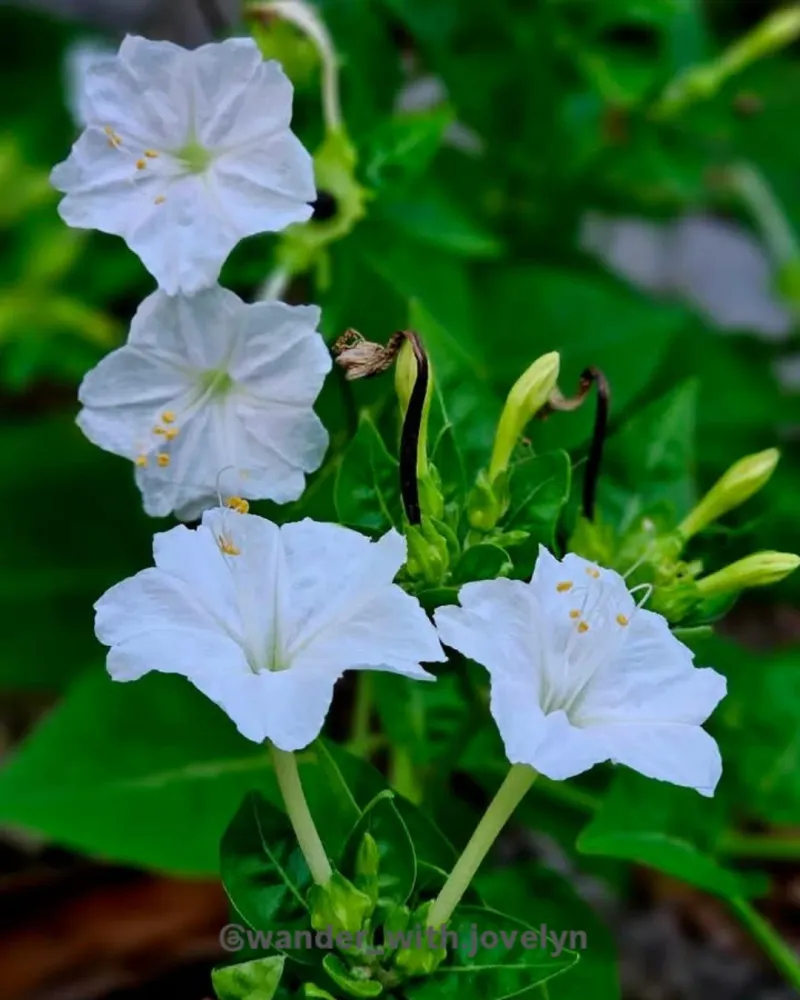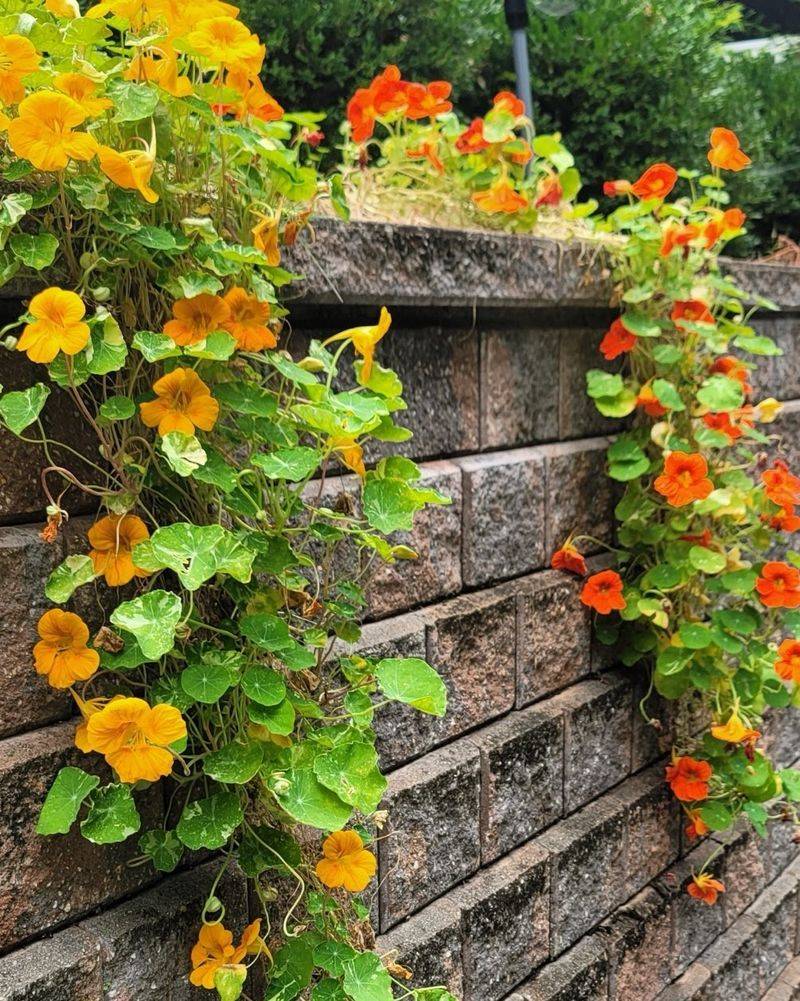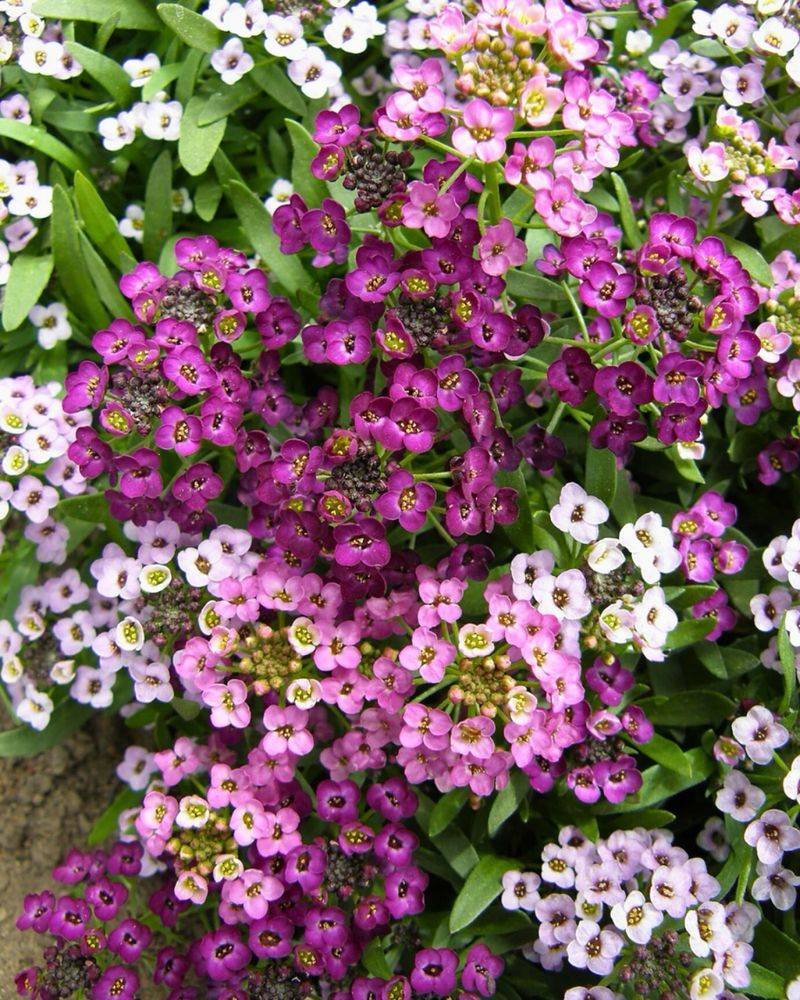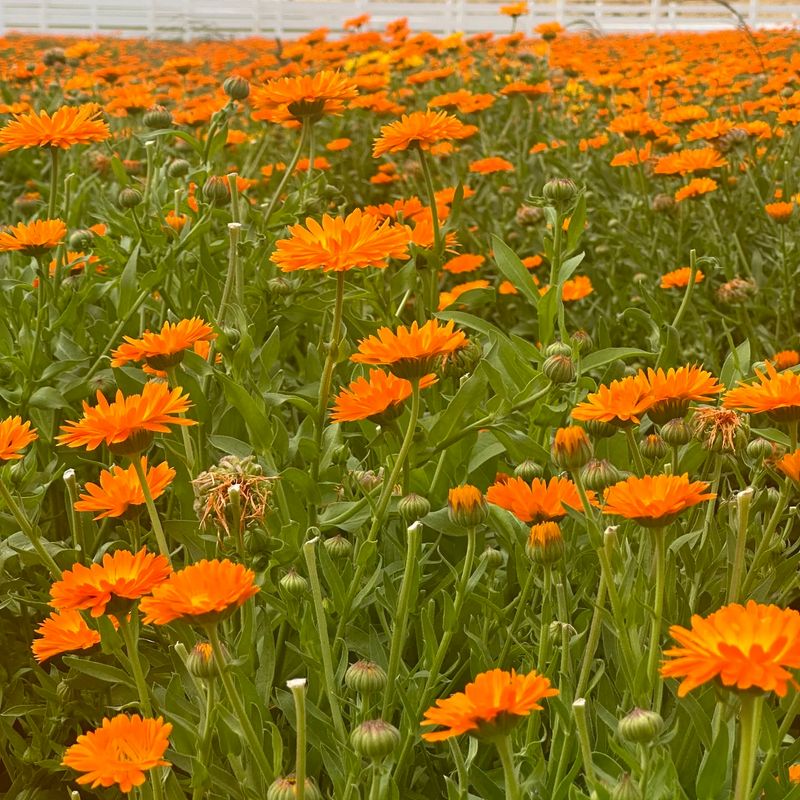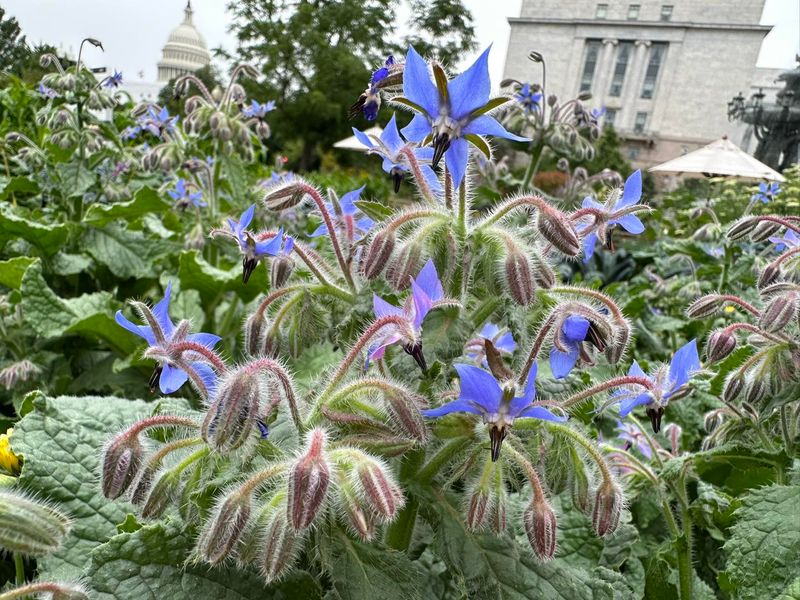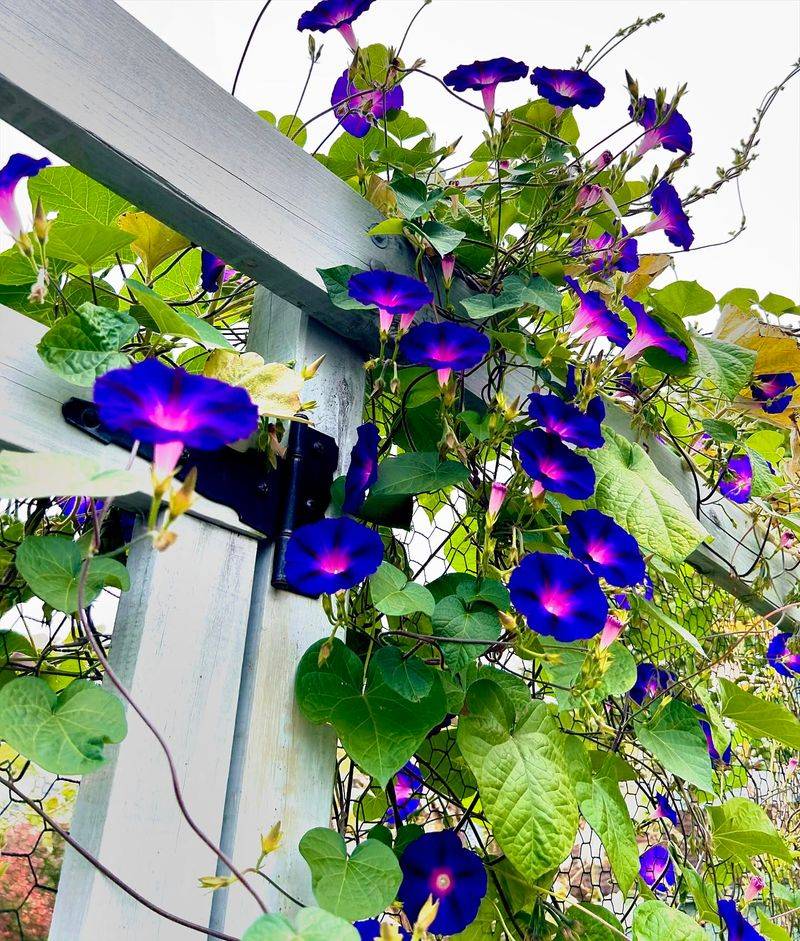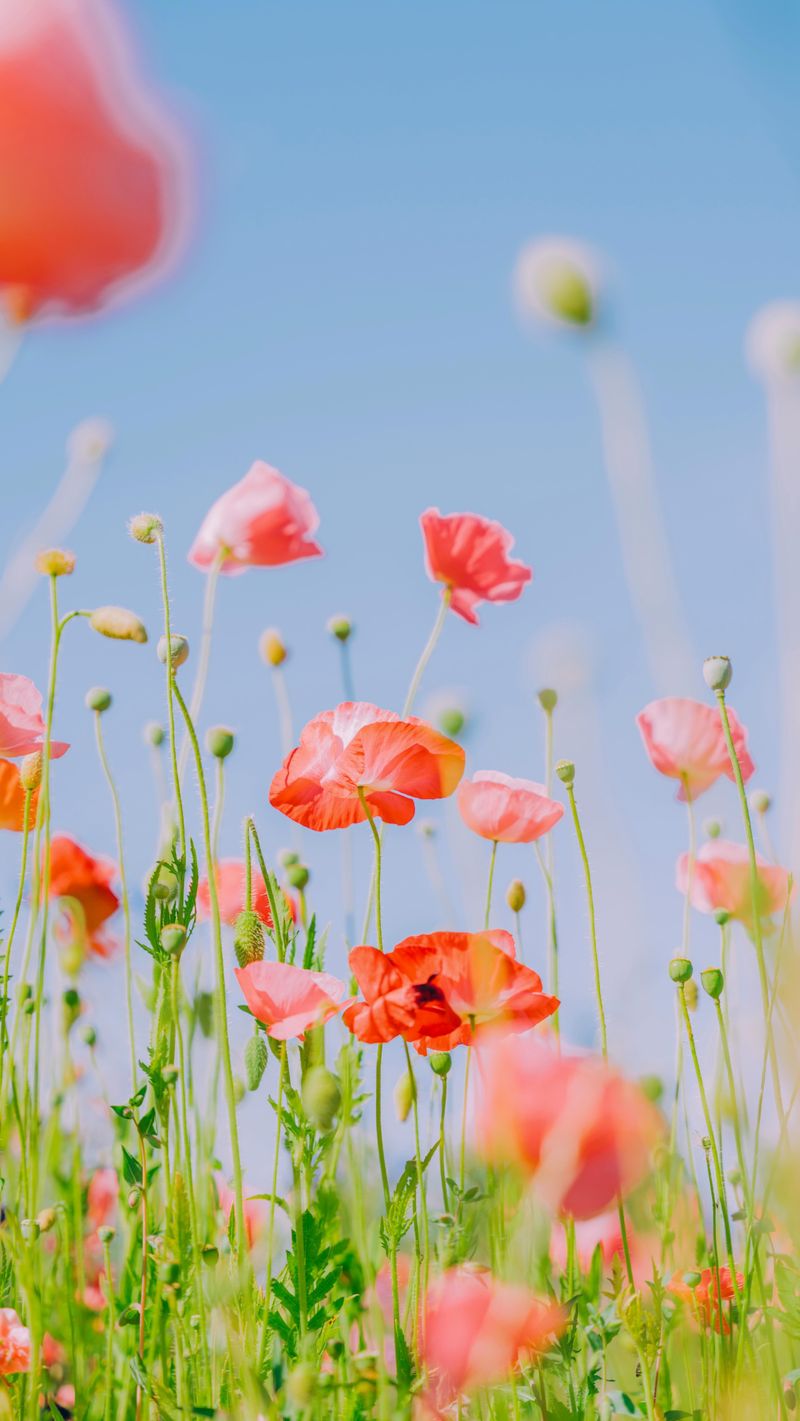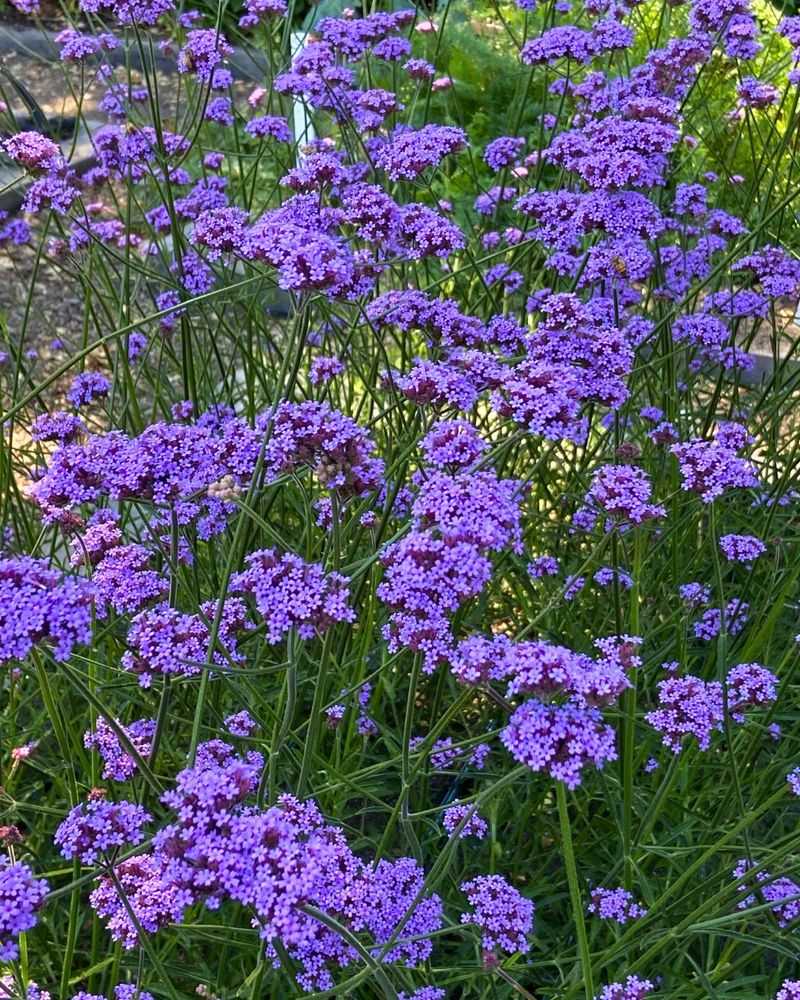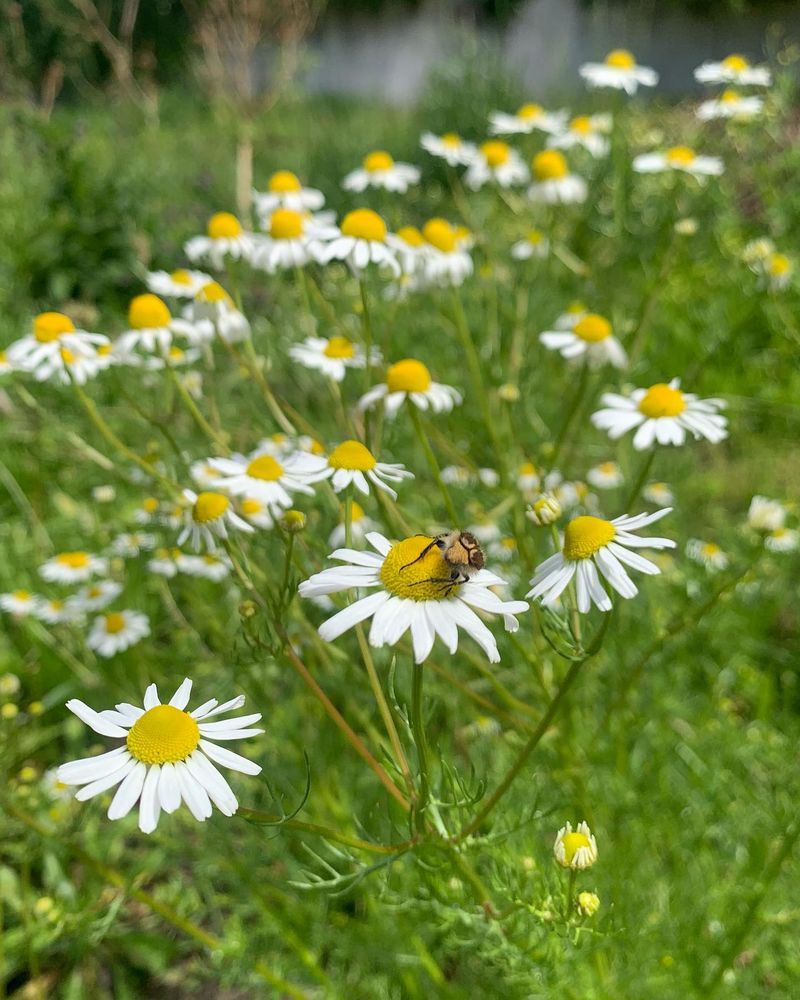If you’re all about easy color without the constant replanting, these self-spreading annuals are little garden heroes. They fill in gaps fast, giving your beds that full, lush look without much effort.
Some of them practically do the work for you once they settle in. And just in case you want to bulk things up even more, we’ve got a few extra picks that love to mingle.
Let’s take a look at the annuals that know how to take the spotlight—and share it too.
1. California Poppy
Golden cups of sunshine emerge each spring from seeds scattered the previous year. California poppies bring vibrant orange and yellow hues to gardens with almost zero effort from the gardener. These drought-tolerant beauties actually prefer poor, sandy soil where many other flowers would struggle.
Resilient and adaptable, these native wildflowers will happily colonize dry slopes, rock gardens, or meadow areas. Their fern-like blue-green foliage creates an attractive groundcover even before the flowers open. When the blooms appear, they’ll close at night or on cloudy days, then reopen with the morning sun.
Allow the distinctive pointed seed pods to dry and split open naturally for best reseeding. Within a few years, you’ll have a self-sustaining colony that returns more abundantly each season!
2. Love-in-a-Mist
Mysterious and enchanting, these flowers seem straight from a fairy tale with their lacy foliage and jewel-toned blooms. Love-in-a-Mist (Nigella) creates a misty effect in the garden as delicate blue, pink, or white flowers float above feathery leaves. After flowering, decorative seed pods develop that are prized in dried arrangements.
Cool-season gardeners appreciate how these unique annuals thrive in spring and early summer before the heat arrives. Nigella plants drop hundreds of tiny black seeds that wait patiently in the soil until conditions are right. They often surprise gardeners by appearing in new spots each year.
For maximum reseeding potential, avoid mulching heavily where you want them to return. The seeds need light contact with soil to germinate properly. Once established, you’ll enjoy these charming volunteers for years to come!
3. Bachelor’s Button
Reminiscent of wildflower meadows and cottage gardens of yesteryear, these classic blooms have been charming gardeners for generations. Bachelor’s Buttons (also called cornflowers) produce brilliant blue flowers that seem to float like little pieces of sky throughout the garden. Their slender stems make them perfect for cutting gardens.
Beginning gardeners find success easily with these unfussy plants. Bachelor’s Buttons attract beneficial insects and butterflies while requiring minimal care beyond occasional deadheading. When allowed to go to seed, they’ll return abundantly the following year.
Hardy enough to withstand light frosts, these flowers often self-sow in fall and overwinter as small seedlings. This head start gives them an advantage over spring-planted annuals. For continuous blooms, consider making a small sowing every few weeks throughout spring!
4. Cleome
Towering dramatically above other garden plants, these unusual flowers create architectural interest with their spider-like blooms. Cleome (spider flower) produces tall stems topped with round flower clusters in white, pink, or lavender that continue blooming from summer until frost. Their distinctive long seed pods add to their exotic appearance.
Heat-loving gardeners particularly value these sturdy plants for their ability to thrive during the hottest months. Cleome seeds scattered in fall germinate readily in warm soil the following summer. They’re excellent for back borders and filling spaces between perennials.
Watch for volunteers to appear in unexpected garden spots each year. Though vigorous self-sowers, cleome seedlings are easy to identify and relocate if they sprout where they’re not wanted. Their height makes them perfect for creating garden “walls” or screens!
5. Larkspur
Standing tall like colorful sentinels, these cottage garden classics bring vertical drama to spring gardens. Larkspur produces spikes of delphinium-like blooms in shades of pink, purple, blue and white that sway gracefully in the breeze. Their hollow stems create natural straws that fascinate children exploring the garden.
Cool-weather gardeners appreciate how these annuals thrive in early spring before summer heat arrives. Larkspur seeds need a cold period to germinate, so they naturally self-sow in fall and winter, sprouting with the first warm days of spring. They make excellent cutting flowers with a long vase life.
For best reseeding success, avoid deadheading the last flush of flowers. When the distinctive seed pods dry and split, they’ll scatter their contents for next year’s display. Seedlings are recognizable by their ferny foliage that resembles dill!
6. Johnny Jump-Up
Peering up with their cheerful little faces, these miniature pansies bring charm to garden edges and containers. Johnny Jump-Ups feature tiny purple, yellow and white flowers that seem to have whiskered faces painted on each bloom. Despite their delicate appearance, they’re surprisingly tough little plants that bloom for months.
Shade gardeners particularly love how these versatile flowers brighten dark corners where other annuals struggle. Johnny Jump-Ups self-sow prolifically, with seeds remaining viable in soil for years. They often appear in cracks between paving stones or at the edges of garden beds.
These diminutive flowers have a sweet, mild flavor that makes them popular as edible garnishes for salads and desserts. Allow some plants to set seed each year, and you’ll never need to purchase them again – they truly earn their name by “jumping up” in unexpected places!
7. Celosia
Resembling flames or coral formations, these eye-catching blooms add textural interest to any garden space. Celosia produces unusual flowers in vibrant shades of red, orange, yellow, and pink that maintain their color even when dried. The crested varieties (cockscomb) look like brightly colored brain coral, while plumed types resemble fluffy flames.
Heat-loving gardeners appreciate how these sturdy plants thrive in the hottest months without wilting. Celosia seeds remain viable in soil for several years, often surprising gardeners by popping up in new locations. Their drought tolerance makes them perfect for hot, dry spots.
For reliable self-seeding, leave some flower heads intact at season’s end. Each plume or crest contains thousands of tiny seeds that will scatter with winter winds. The resulting volunteers may show interesting color variations from the parent plants—nature’s own breeding program!
8. Four O’Clock
Releasing their sweet fragrance as the day winds down, these old-fashioned flowers bring evening magic to gardens. Four O’Clocks produce trumpet-shaped blooms in white, yellow, pink and magenta that open in late afternoon (hence their name). Their glossy foliage forms bushy mounds that work well as informal hedges.
Budget-conscious gardeners love how these plants return year after year from both seeds and tuberous roots. Four O’Clocks develop marble-sized black seeds that readily sprout in warm soil. In mild climates, their roots may survive winter to resprout in spring.
Perfect for planting near patios and evening gathering spaces, these flowers attract sphinx moths and hummingbirds with their sweet scent. Each plant can produce hundreds of seeds, ensuring plenty of volunteers for next season. Their night-blooming habit makes them ideal companions for morning glories in moon gardens!
9. Nasturtium
Trailing over garden edges or spilling from containers, these edible beauties combine ornamental and culinary value. Nasturtiums produce round leaves and trumpet-shaped flowers in fiery shades of orange, yellow, and red that brighten any garden space. Both flowers and leaves have a peppery flavor similar to watercress that adds zip to salads.
Casual gardeners appreciate how these easy-care plants thrive in poor soil with minimal attention. Nasturtium seeds are large and easy to collect – they resemble wrinkled peas that drop to the ground when ripe. They often self-sow in gravel paths or between stepping stones.
These versatile plants serve multiple garden purposes – attracting beneficial insects, repelling certain pests, and providing ground cover. For reliable self-seeding, allow some flowers to form seed pods late in the season. The resulting volunteers often appear in unexpected but delightful locations!
10. Alyssum
Creating carpets of tiny flowers that buzz with pollinator activity, these low-growing annuals soften garden edges. Alyssum produces masses of honey-scented blooms in white, purple, or pink that form mounding drifts only 3-6 inches tall. Their sweet fragrance intensifies in the evening, perfuming the whole garden.
Beginning gardeners find success easily with these unfussy plants. Alyssum seeds are tiny but germinate readily in cool soil, often sprouting in fall or early spring without any help. They’re perfect for filling gaps between stepping stones or softening the edges of garden beds.
For continuous blooms throughout the growing season, consider shearing plants back by half after the first flush of flowers fades. This rejuvenates the plants and stimulates new growth. Allow the final autumn flowers to set seed, ensuring plenty of volunteers will appear next season!
11. Calendula
Brightening gardens from earliest spring until hard frost, these cheerful daisies offer both beauty and utility. Calendula (pot marigold) produces sunny yellow and orange blooms that have been used medicinally for centuries. Their edible petals add color to salads or can be used to make natural dyes and skin-soothing salves.
Cool-season gardeners appreciate how these hardy annuals thrive in spring and fall when many others struggle. Calendula seeds are curved and slightly rough-textured, making them easy to collect and recognize when they sprout. They germinate readily in cool soil, often appearing before winter has fully departed.
For maximum reseeding potential, allow some flower heads to remain on plants at season’s end. The seeds will drop naturally and sprout when conditions are favorable. These versatile plants attract beneficial insects while repelling certain garden pests – true garden multitaskers!
12. Borage
Surprising garden visitors with its brilliant blue star-shaped flowers, this herb combines ornamental and culinary uses. Borage produces clusters of downward-facing blooms that honeybees absolutely adore. The cucumber-flavored flowers and young leaves can be used in drinks, salads, or as garnishes.
Cottage gardeners value this plant for its ability to improve soil while attracting beneficial insects. Borage seeds are large and black, resembling small beetles, and germinate readily wherever they fall. The hairy stems and leaves give the plant a silvery appearance in certain lights.
This ancient herb was traditionally believed to bring courage to those who consumed it. For reliable self-seeding, simply let plants complete their natural lifecycle. Once established in your garden, borage will return year after year, though seedlings are easy to recognize and remove if they appear where unwanted.
13. Morning Glory
Transforming fences and trellises into walls of color, these vigorous climbers create vertical interest with minimal effort. Morning Glory vines produce trumpet-shaped flowers in shades of blue, purple, pink, and white that open with the dawn and close by afternoon. Their heart-shaped leaves form a dense green backdrop for the daily flower show.
Vertical gardeners appreciate how these fast-growing plants can quickly cover unsightly views or create living privacy screens. Morning Glory seeds are hard-coated and distinctive, resembling small black peppercorns. They drop to the ground when ripe and often remain dormant until soil warms the following summer.
For controlled self-seeding, deadhead most flowers but allow some seed pods to mature late in the season. These enthusiastic self-sowers can become overly abundant if all seeds are allowed to drop. Their twining habit makes them perfect for covering arbors or climbing through shrubs!
14. Poppies
Emerging like tissue paper blooms on slender stems, these delicate-looking flowers are surprisingly tough garden performers. Annual poppies produce papery petals in vibrant shades that dance above blue-green foliage. Their seed pods resemble tiny pepper shakers, perfect for scattering seeds exactly where you want them.
Wildflower enthusiasts love how these easy-care plants bring ephemeral beauty to garden spaces. Poppy seeds are dust-like and need light to germinate, often sprouting in fall or earliest spring. They’re perfect for naturalizing in meadow gardens or brightening spaces between perennials.
Unlike their perennial cousins, annual poppies like Shirley and bread seed types are prolific self-sowers. For best results, scatter seeds in fall directly on soil surface without covering. These cool-season annuals bloom before summer heat arrives, then set seed and complete their lifecycle just as other garden plants are hitting their stride!
15. Verbena
Creating clouds of tiny star-shaped flowers that hover above garden beds, these delicate-looking plants are surprisingly resilient. Annual verbena produces clusters of small blooms in shades of purple, pink, red, and white that attract butterflies and other pollinators. Their finely-cut foliage adds textural interest even when plants aren’t flowering.
Heat-tolerant gardeners value these plants for their ability to thrive during the hottest months without wilting. Verbena seeds are small but germinate readily in warm soil, often appearing in garden paths or between stepping stones. They’re excellent for filling gaps between perennials or softening hard edges.
For reliable self-seeding, avoid deadheading the last flush of flowers in late summer. The tiny seeds will scatter with autumn winds, promising new volunteers next season. These adaptable plants work equally well in containers or garden beds, bringing long-lasting color wherever they grow!
16. Chamomile
Resembling tiny daisies dancing on slender stems, these apple-scented flowers bring whimsy and practicality to gardens. Annual chamomile produces masses of white blooms with sunny yellow centers above feathery, fern-like foliage. The flowers can be harvested for making the famous calming tea, or left to set seed for next year’s plants.
Medicinal gardeners appreciate this plant’s long history as a gentle sleep aid and digestive remedy. Chamomile seeds are incredibly small yet germinate readily in cool soil, often appearing in early spring before other annuals. They’re perfect for cottage gardens or informal meadow plantings.
These adaptable plants often find their way into lawn edges or between paving stones. For maximum reseeding potential, allow some flower heads to remain on plants at season’s end. The seeds need light to germinate, so avoid covering areas where you want them to return with heavy mulch!

